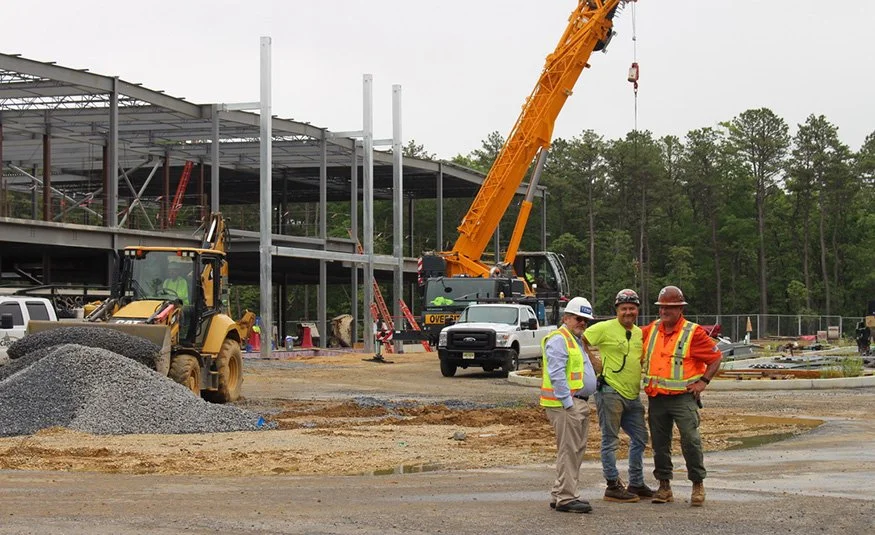South Jersey’s Aerospace Future Takes Flight with Topping Off of NARTP Innovation Center
The topping off of Building No. 2 at the National Aerospace Research & Technology Park marks a major step toward establishing South Jersey as a hub for aerospace innovation, providing state-of-the-art space for research, collaboration, and workforce development. Image: Courtesy of NARTP
The design and construction of Building No. 2 at the National Aerospace Research & Technology Park (NARTP) in Egg Harbor Township, NJ, marks a pivotal step in advancing the region’s role in aerospace research and innovation. The 40,000-sf Strategic Innovation Center (SIC), now officially topped off, will provide high-tech lab, office, and collaborative space tailored to the needs of startups, research institutions, and global aerospace companies.
Backed by an $8.6 million investment from the New Jersey Economic Development Authority’s Strategic Innovation Center Program, and supported by a coalition of public and private stakeholders including the Atlantic County Improvement Authority (ACIA) and US Economic Development Administration, the project reflects a robust commitment to fostering a world-class innovation ecosystem in South Jersey. This milestone is not only symbolic of vertical progress in construction, but also of the broader mission to transform South Jersey into a destination for advanced aviation research and workforce development.
Officials envision the new facility as a cornerstone in a diversified economy—one that moves beyond its reliance on tourism and gaming and toward a sustainable future built on innovation and education. Lab Design News spoke to Tim Edmunds, ACIA executive director, and Rocco Mancuso, director of operations at NARTP, about how this project is positioned to catalyze long-term regional growth.
Q: How was the design of Building No. 2 tailored specifically to support aerospace research and innovation?
Tim Edmunds: The building was designed as a core and shell project (essentially empty space) with raised flooring, allowing tenants the flexibility to ‘custom design’ their space.
Q: What sustainability features or future-proofing strategies were included in the construction of the facility?
Tim Edmunds: The building was designed per ASHRAE/USGBC/IES Standard 189.1-2009.
Q: How will the building support collaboration between startups, established aerospace companies, and academic partners?
Rocco Mancuso: The building features shared conference rooms, a strategic innovation center, and co-working spaces to foster spontaneous and structured collaboration. It will serve as a key site for joint research activities and public-private partnerships, including our AI/ML initiative. The building is designed to accelerate aerospace innovation across sectors.
Q: How does Building No. 2 complement or expand the capabilities of the existing infrastructure at NARTP?
Rocco Mancuso: Building No. 2 strategically expands the capabilities of NARTP by expanding our available R&D footprint and introducing the Strategic Innovation Center. Together, the two buildings form an integrated innovation ecosystem where startups and research groups can seamlessly scale their operations from ideation to lab-based prototyping. The proximity to the FAA Technical Center for Advanced Aerospace and Atlantic City International Airport remains a defining asset, and Building No. 2 enhances our ability to attract tenants engaged in autonomy, AI/ML, and secure aerospace systems.
Q: What role does flexibility play in the facility’s design to accommodate evolving aerospace technologies and tenant needs?
Tim Edmunds: The fact that the building is being constructed as a core and project gives tenants complete flexibility in the fit-out design of their space.
Q: What’s the anticipated timeline for occupancy, and what kinds of tenants or research programs are expected to move in first?
Tim Edmunds: Mid-March 2026. All tenants must be approved by FAA as being involved in aerospace research, support, design, and development.

